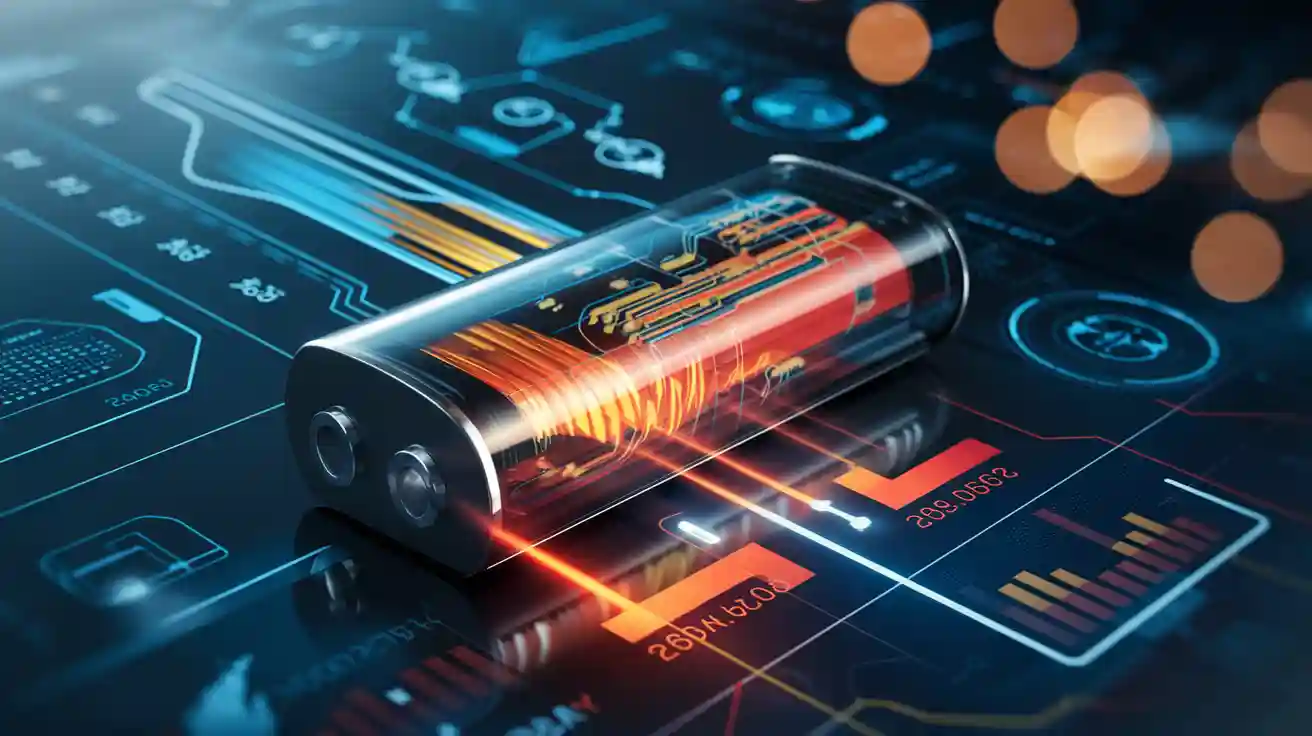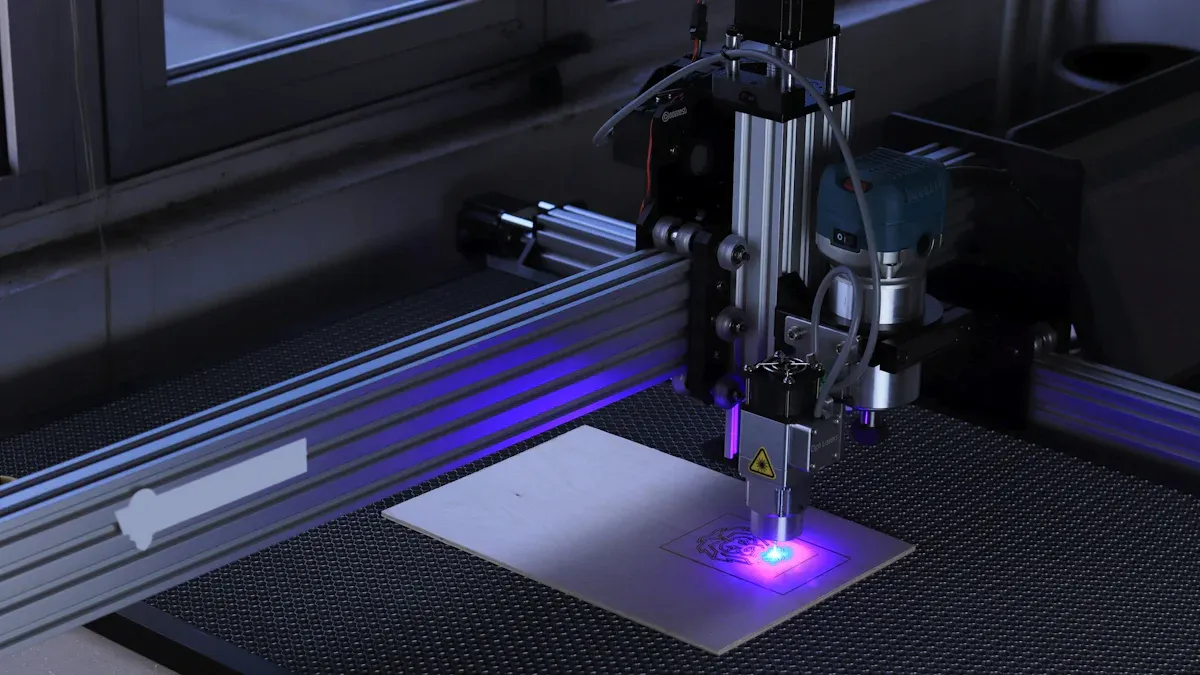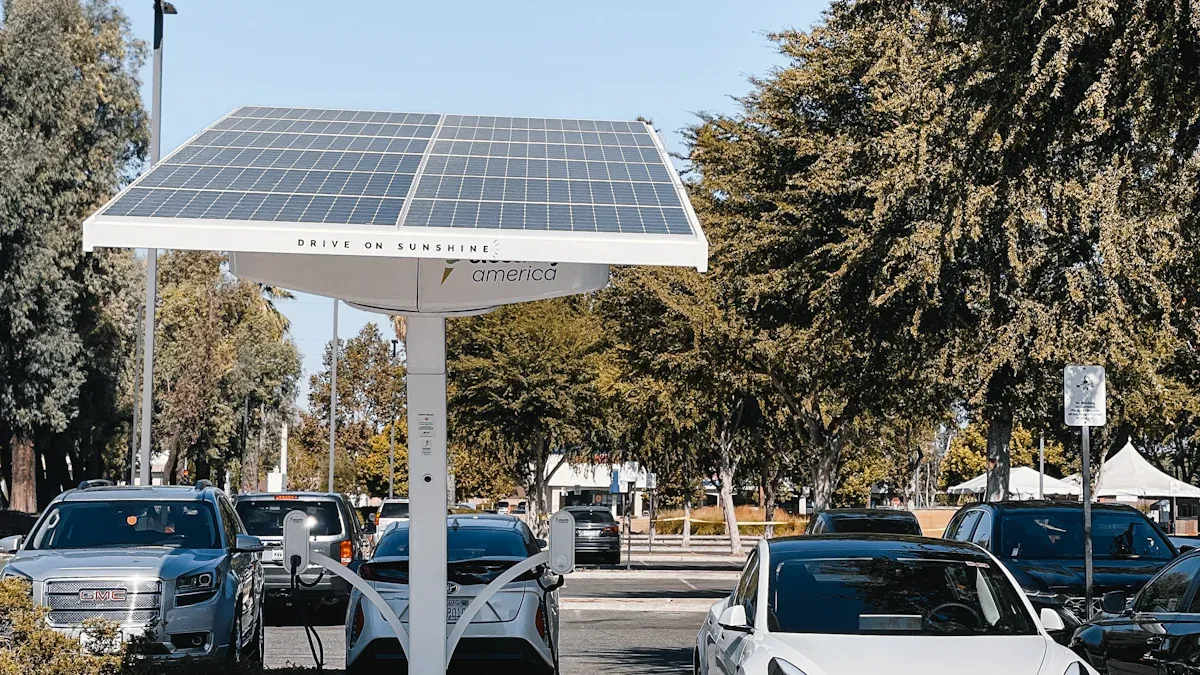
Lipo technology gives you a major leap in battery performance for 2025. You can see higher energy density, faster charging, and longer cycle life compared to li-ion batteries. The numbers show clear advantages:
| Performance Metric | Lithium Polymer (LiPo) | Lithium-Ion (Li-Ion) |
|---|---|---|
| Densidad energética (Wh/kg) | 300-400 | 150-250 |
| Cycle Life (charge cycles) | 1500-2000 | 500-1000 |
| Charging Rate (C) | 2-3C | 1-2C |
| Self-Discharge Rate (%) | <1% per month | 2-3% per month |
| Thermal Stability | Alta | Moderado |
You get flexible shapes with lithium-polymer batteries, making them fit more devices. Lipo batteries also show better safety and less self-discharge. Check out the chart below to see how these two battery types compare in real use:

LiPo Technology Advances

New Electrolyte Materials
You see big changes in lipo technology in 2025, especially with new electrolyte materials. Researchers now use AI and machine learning to find better electrolyte molecules for lipo batteries. This approach helps you get batteries with higher ionic conductivity, better stability, and improved efficiency. You no longer have to wait for slow trial-and-error methods. Instead, you benefit from faster discoveries that lead to high-performance batteries.
Scientists also work on new polymer electrolytes. These materials make lithium-polymer batteries more flexible and robust. You can bend or shape these batteries for wearables, drones, or slim smartphones. Some teams use lithium lanthanum titanium oxide (LLTO) solid-state electrolytes. This material boosts both density and conductivity, giving you enhanced power density and longer battery life. Other researchers focus on sulfide electrolytes, which make batteries safer and increase their cycle life.
A new type of composite solid electrolyte membrane combines Li6PS5Cl and PVDF. This mix gives you batteries with high conductivity and strong mechanical stability. You get safer, more reliable batteries for your devices.
Note: These advances in lipo technology help you enjoy batteries that are safer, more flexible, and last longer than before.
Manufacturing Improvements
Manufacturing for lipo batteries has also improved in 2025. Factories now use better quality control and smarter processes. You get batteries with fewer defects and more consistent performance. Production lines waste less material, which lowers costs and helps the environment.
Polymer electrolytes in lithium polymer batteries reduce leakage risks. You can use these batteries in more shapes and sizes, making them perfect for high-performance gadgets. New manufacturing techniques also boost energy density and safety. You see these batteries in drones, consumer electronics, and even aerospace.
Here’s a quick comparison of lipo batteries and traditional li-ion batteries in 2025:
| Característica | LiPo Batteries (2025) | Li-Ion Batteries (2025) |
|---|---|---|
| Electrolyte Type | Semi-solid/gel polymer | Liquid/gel |
| Design Flexibility | Ultra-thin, flexible | Rigid, less flexible |
| Seguridad | Lower leakage, safer | Higher risk if damaged |
| Aplicación | Lightweight, compact devices | Large-scale, high-demand uses |
You get more choices and better performance with lipo technology, making it a top pick for the latest battery-powered devices.
LiPo Batteries vs Li-Ion: Key Differences
Densidad energética
When you compare lipo batteries and li-ion batteries, energy density stands out as a key factor. Energy density tells you how much energy a battery can store for its weight. In 2025, lithium-ion batteries usually offer an energy density between 200 and 300 Wh/kg. This high energy density makes li-ion batteries a top choice for electric vehicles and many consumer electronics. Lipo batteries, on the other hand, provide an energy density in the range of 100 to 200 Wh/kg. While this is slightly lower, lipo batteries give you more flexibility in shape and size, which is a big advantage for slim devices and wearables.
| Tipo de batería | Average Energy Density (Wh/kg) | Notas |
|---|---|---|
| Baterías de iones de litio | 150 – 250 (some up to 300) | High energy density, ideal for EVs and phones |
| Baterías Lipo | 100 – 200 | Flexible form factor, used in drones and wearables |
You should choose li-ion batteries if you need maximum energy in a small space. If your device needs a custom shape or lightweight design, lipo batteries offer unique advantages.
Potencia de salida
Power output measures how quickly a battery can deliver energy. Both lipo batteries and li-ion batteries provide high power output, but lipo batteries often excel in this area. You can see lipo batteries used in drones and RC cars because they deliver bursts of power quickly. This high power output makes them perfect for devices that need fast acceleration or quick response.
Li-ion batteries also provide strong performance, especially in steady, long-term use. For example, a rechargeable li-ion battery in a laptop gives you hours of use at a stable rate. If you need a battery for a device that requires sudden, high power, lipo batteries are a smart choice.
Tip: For high power output, lipo batteries are often the best pick for hobbyists and professionals who use drones or racing vehicles.
Seguridad
Safety is a top concern when you use any rechargeable battery. Li-ion batteries have a strong safety record, with failure rates less than one in a million for quality cells. Manufacturers test these batteries with drop, vibration, and overcharge tests to make sure they meet strict safety standards. You find li-ion batteries in electric vehicles, laptops, and smartphones because of their reliable safety features.
Lipo batteries, while similar in chemistry, have a soft pouch design. This makes them more flexible but also more vulnerable to damage. If you puncture or overcharge a lipo battery, it can overheat or catch fire. The failure rate for lipo batteries is higher than for li-ion batteries, and they reach higher temperatures during thermal runaway. You must use special chargers and handle lipo batteries with care to avoid accidents.
Note: Always follow safety considerations and use the right charger for your battery type. Never leave charging batteries unattended.
Recent changes in safety standards also affect how you ship and store batteries. In 2025, new rules limit the state of charge for batteries during air transport and require better packaging. These rules help keep you and your devices safe.
Ciclo de vida
Cycle life tells you how many times you can charge and discharge a battery before it loses capacity. Both lipo batteries and li-ion batteries have similar longevity, but the exact number depends on the brand and how you use them. On average, lipo batteries last for De 300 a 500 ciclos. Li-ion batteries can last just as long or even longer, especially if you follow good charging habits.
| Tipo de batería | Longevity (Charge Cycles) | Maintenance Requirements |
|---|---|---|
| Lipo | 300 – 500 | Avoid full charge, keep cool, use proper charger |
| Li-ion | 300 – 500+ | Same as lipo: avoid full charge, keep cool, use proper charger |
You can extend the lifespan of both types by not leaving them fully charged for long periods and by storing them in cool places. Both batteries are rechargeable and need similar care.
Coste
Cost is another important factor when you pick a battery. In 2025, li-ion batteries have well-documented prices. The average cost per kWh for li-ion batteries is about $85, but it can range from $70 to $151 depending on the chemistry and order size. For example, lithium iron phosphate (LFP) batteries are cheaper and safer, while nickel manganese cobalt (NMC) batteries cost more but offer higher energy density.
| Química de la batería | Approximate Cost per kWh (2025) | Notas |
|---|---|---|
| LFP | $70–$90 | Lower cost, safer |
| NMC | $90–$110 | Higher energy density |
| NCA | $100–$120 | High performance, expensive |
For lipo batteries, exact cost data is harder to find. Manufacturers offer many types, but prices are not as transparent as for li-ion batteries. You may pay more for lipo batteries if you need a custom shape or high power output. In general, li-ion batteries give you better value for large-scale applications, while lipo batteries are worth the extra cost for specialized devices.
Note: Always compare the total cost, including safety features and expected lifespan, before choosing a battery.
Lithium-Polymer Batteries in Real-World Use

Device Design Flexibility
You see a big difference in design flexibility when you compare lipo batteries to other types. Lipo batteries use a gel-like polymer electrolyte and a soft pouch casing. This design lets you create batteries in many shapes and sizes. You can make them thin, curved, or even custom-shaped for special devices. In contrast, li-ion batteries use a rigid metal casing, which limits their shape and makes them heavier.
| Característica | Baterías LiPo | Li-ion Batteries |
|---|---|---|
| Electrolyte Type | Gel-like polymer electrolyte | Liquid electrolyte |
| Casing/Form Factor | Lightweight, flexible pouch format | Rigid cylindrical or prismatic metal casing |
| Design Flexibility | High; customizable shapes and sizes | Limited; rigid and less shape adaptable |
| Peso | Lighter due to flexible design | Heavier due to rigid casing |
| Consideraciones de seguridad | Reduced leakage risk; prone to swelling if mishandled | Requires robust containment to prevent leakage |
| Aplicaciones típicas | Drones, wearable devices, RC models, smartphones | Electric vehicles, laptops, power tools |
| Densidad energética | Slightly lower than Li-ion | Generally higher energy density |
You benefit from this flexibility in many ways. Manufacturers use lithium-polymer batteries in smartphones, wearables, and medical devices. These batteries help make devices lighter and more comfortable to use. The flexible design also supports new product shapes, like foldable phones and curved screens.
Charging and Discharge Rates
Lipo batteries stand out in high discharge applications. You get high discharge rates, sometimes up to 90C, which means these batteries can deliver a lot of power very quickly. This makes them perfect for drones, RC cars, and other devices that need fast bursts of energy. You also see fast charging with lipo batteries. Some can charge at rates up to 5C, so you can recharge them in about 12 minutes. However, charging too fast can wear out the battery sooner.
- Lipo batteries handle high discharge rates and fast charging better than most li-ion batteries.
- You must watch for swelling and overheating, especially if you push the battery hard.
- Li-ion batteries offer better durability and safety features, but they do not support such high discharge rates.
Tip: Always follow safety standards and use the right charger to protect your rechargeable batteries.
Application Examples
You find lipo batteries in many devices that need lightweight power and flexible shapes. Drones use them for quick energy bursts and long flight times. Wearable devices, like fitness trackers and smartwatches, use lithium polymer batteries because they fit into small, thin spaces. Medical devices, such as portable pumps and monitors, rely on these batteries for comfort and long use. Even some electric vehicles use lipo batteries for high discharge applications, like racing or lightweight e-bikes.
| Performance Improvement Aspect | Descripción | Impact on Consumer Device Selection |
|---|---|---|
| Densidad energética | Advanced lipo batteries reach up to 250 Wh/kg | Longer battery life and more device usage per charge |
| Form Factor Flexibility | Ultra-thin, lightweight, customizable shapes | Thinner, lighter, and more portable devices |
| Fast Charging Capability | Safer, faster charging | Quick recharge times for busy users |
| Safety Enhancements | AI-driven management and ceramic coatings | Better safety and user confidence |
You get many advantages from lipo batteries, but you must always consider safety. Manufacturers keep improving safety features to meet new safety standards. This helps you enjoy better performance and peace of mind in your devices.
Li-Ion Batteries: Strengths and Trade-Offs
Durabilidad
You will notice that li-ion batteries stand out for their durability. These batteries often last several years if you take care of them. You find li-ion batteries in smartphones, laptops, and electric vehicles because they keep working well over time. Their longer lifespan means you do not have to replace them as often as other batteries. This makes li-ion batteries a smart choice for devices where you need long-term reliability. You also see them in energy storage systems and even in airplanes, where safety and steady performance matter most.
- Consumer electronics like tablets and laptops
- Electric vehicles and backup power systems
- Aerospace and aviation equipment
Li-ion batteries have a lower self-discharge rate and hold their charge longer. You get better reliability and fewer worries about your battery losing power when you need it most.
High-Temperature Performance
Li-ion batteries handle high temperatures better than many other types. You can use them in places where heat is a concern, such as inside cars or near electronics that get warm. These batteries have built-in safety features that help prevent overheating. However, you still need to avoid extreme heat, as it can shorten the battery’s life or cause safety problems. Li-ion batteries work well in steady, moderate temperatures and can recover from short periods of higher heat.
Note: Always store and charge your batteries in a cool, dry place to keep them safe and working longer.
Cost Considerations
When you compare li-ion batteries to other options, you see both advantages and disadvantages. Li-ion batteries usually cost more at first, but their longer cycle life makes them a better value over time. You spend less on replacements because these batteries last longer. Manufacturers also choose li-ion batteries for large-scale projects, like electric vehicles and home energy storage, because they offer good cost-effectiveness.
| Característica | Baterías LiPo | Li-ion Batteries |
|---|---|---|
| Ciclo de vida | Shorter (150-300+) | Longer (300-500+) |
| Upfront Cost | Baja | Más alto |
| Valor a largo plazo | Less cost-effective | More cost-effective |
Some concerns with li-ion batteries include the need for careful charging and temperature management. Both li-ion and other batteries require you to follow safety guidelines. If you want a battery that lasts, performs well, and offers good safety, li-ion batteries remain a top pick for many uses.
You see real changes in battery performance with new technology in 2025. Devices now run longer and charge faster. You get safer and more flexible power options. When you choose a battery, think about your device’s needs.
- Pick LiPo for high-drain uses like drones or RC cars.
- Choose Li-Ion for steady power in phones or laptops.
- Always check the battery’s specs and match them to your device.
- Watch for aging and temperature to keep your battery working well.
PREGUNTAS FRECUENTES
What makes LiPo batteries safer in 2025?
You get safer LiPo batteries because of new solid electrolytes and better packaging. These changes lower the risk of leaks and fires. Manufacturers also use smart battery management systems to prevent overcharging and overheating.
Can you use a LiPo charger for a Li-Ion battery?
No, you should not use a LiPo charger for a Li-Ion battery. Each battery type needs a specific charging profile. Using the wrong charger can damage the battery or cause safety problems.
How do you store LiPo batteries for long periods?
- Store LiPo batteries at about 50% charge.
- Keep them in a cool, dry place.
- Use a fireproof bag or container for extra safety.
Why do LiPo batteries swell sometimes?
LiPo batteries swell when gas builds up inside the pouch. Overcharging, deep discharging, or physical damage can cause this. Always follow safety tips and use the right charger to avoid swelling.

